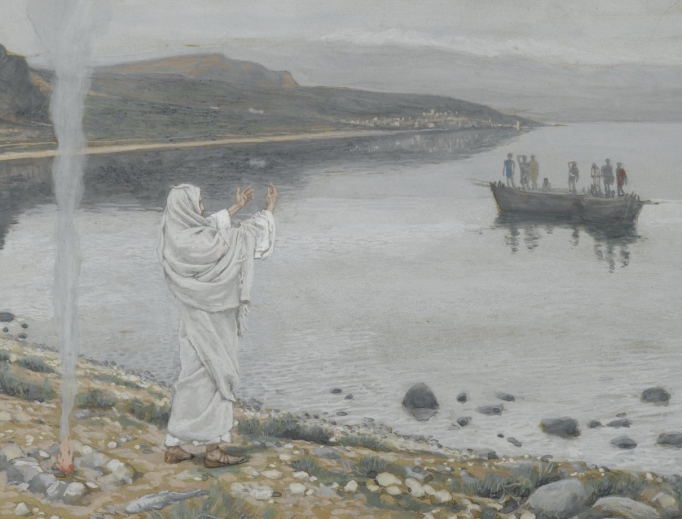Recognizing Jesus as the God Who Saves
User’s Guide to Sunday, May 5

Sunday, May 5, is the Third Sunday of Easter. Mass readings: Acts 5:27-32, 40b-41; Psalm 30:2, 4-6, 11-13; Revelation 5: 11-14; John 21:1-19.
One of the astonishing features of Jesus’ encounters with his followers after the Resurrection is their inability to recognize him. From Mary Magdalene at the tomb to the apostles at the Sea of Galilee, Jesus was right in their midst repeatedly — and yet seemed absent to his grieving disciples.
We could wonder at the reasons for this. Is it simply that when we do not expect to see someone alive again, the person’s features become hard to recognize? Is it that the Risen Lord appeared very different from the son of the carpenter who walked among them? While these are possible explanations, how we recognize someone depends largely on what or whom we seek.
In today’s first reading, the apostles witness before the Sanhedrin, the leaders of Israel who should have been the first to recognize Jesus as the fulfillment of the prophecies. Even after all Jesus had said and done, many of them did not recognize him. Peter testifies, “The God of our ancestors raised Jesus, though you had him killed by hanging him on a tree. God exalted him at his right hand as leader and savior to grant Israel repentance and forgiveness of sins” (Acts 5:30-31). Recognizing Christ as the Risen and Exalted One is linked directly to accepting him as the Savior who grants repentance and forgiveness of sins.
The Israelites had long been taught to seek the Lord’s mercy. Psalm 30 is a plea for the Lord to turn the mourning of Israel into dancing through the gift of divine pity. Then the people would be free to say, “I will praise you Lord, for you have rescued me.” In recognizing their own sinfulness, the People of God recognized their profound need for a God who saves.
In the encounter of today’s Gospel, the apostles first experienced their material need. They had been fishing all night and had caught nothing. When Jesus appeared on the shore and directed them to cast their nets on the right side of the boat, they were astonished by the abundance of the catch they made. It was only after this miraculous provision for their bodily needs that Simon Peter recognized Jesus on the shore.
A far greater recognition of Jesus as the God who saves awaited Peter on the shore. There, in the place where he was first called, Peter was questioned three times by the Lord. This marvelous threefold questioning of Peter’s love, followed by a threefold call to feed and tend the sheep, led Peter to recognize the Friend whom he had failed in the moments of his fearful denial.
Peter’s firsthand experience taught him to recognize Jesus in the act of unconditional mercy. Immediately after Peter’s declaration of his love, Jesus predicted the share Peter would receive in his passion: “When you grow old, you will stretch out your hands, and someone else will dress you and lead you where you do not want to go” (John 21:18). In this dialogue, Peter experienced his greatest recognition of the Lord who did not abandon him in life or in death.
When we see only our own failures, or are tempted to think we can rely completely on ourselves, may we receive the grace to recognize not only our profound need, but most especially the presence of Jesus who is always with us and whose merciful love has the power to save.
Dominican Sister Mary Madeline Todd is a member of the Dominican Sisters of St. Cecilia Congregation in Nashville, Tennessee.
She is assistant professor of theology at Aquinas College in Nashville and also serves through retreats, public speaking and writing.

















